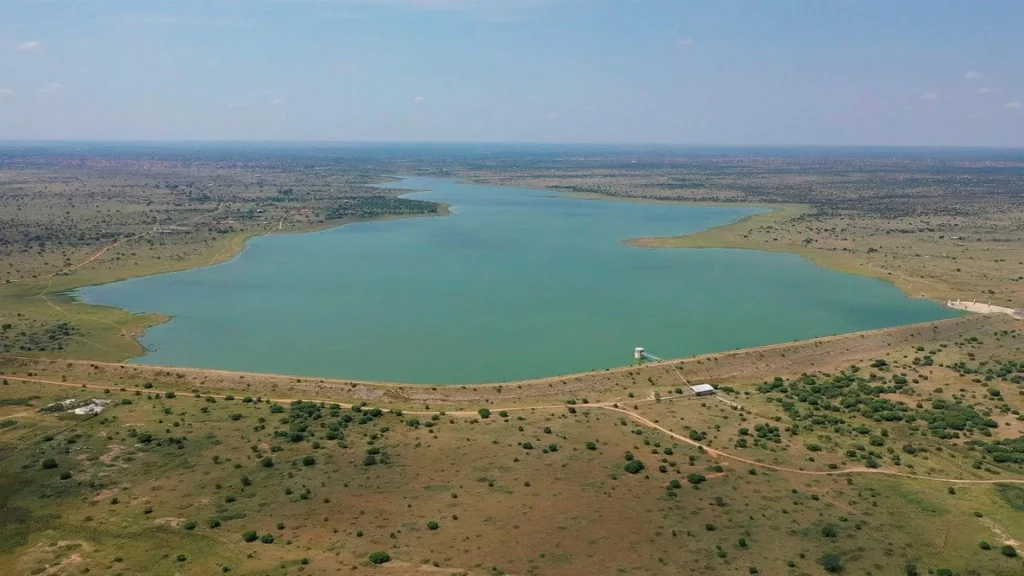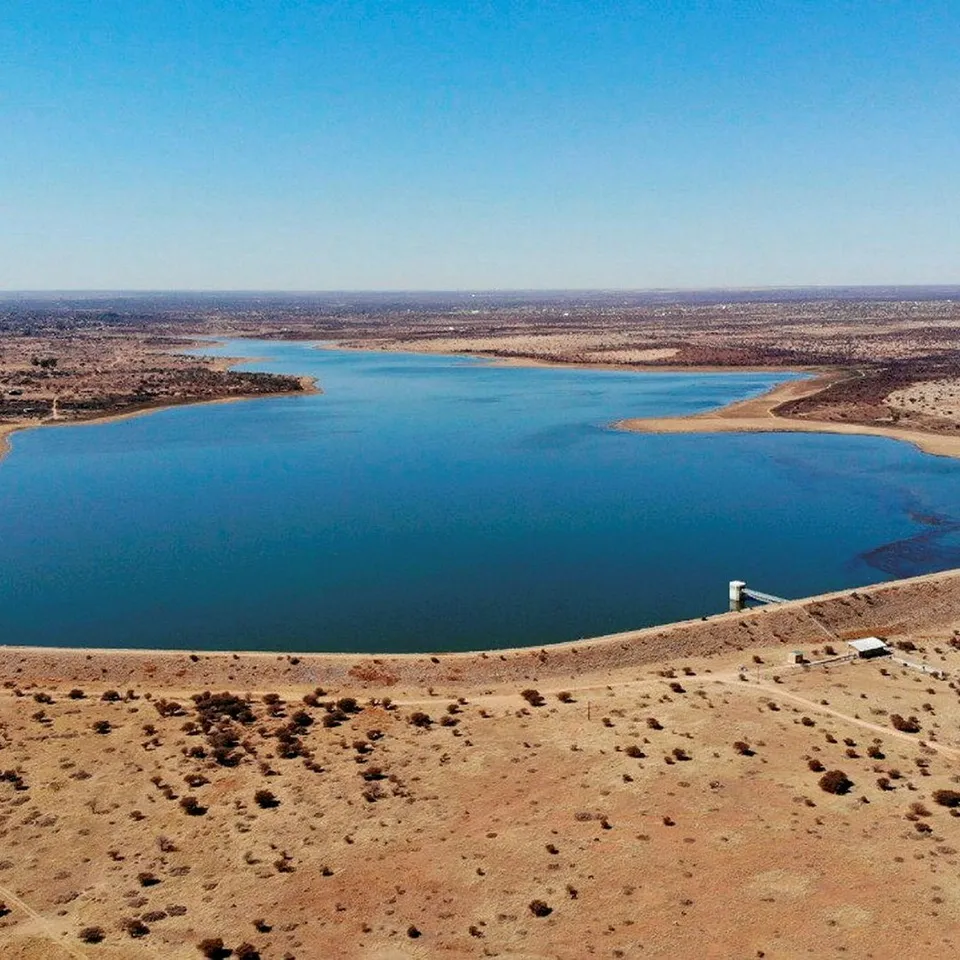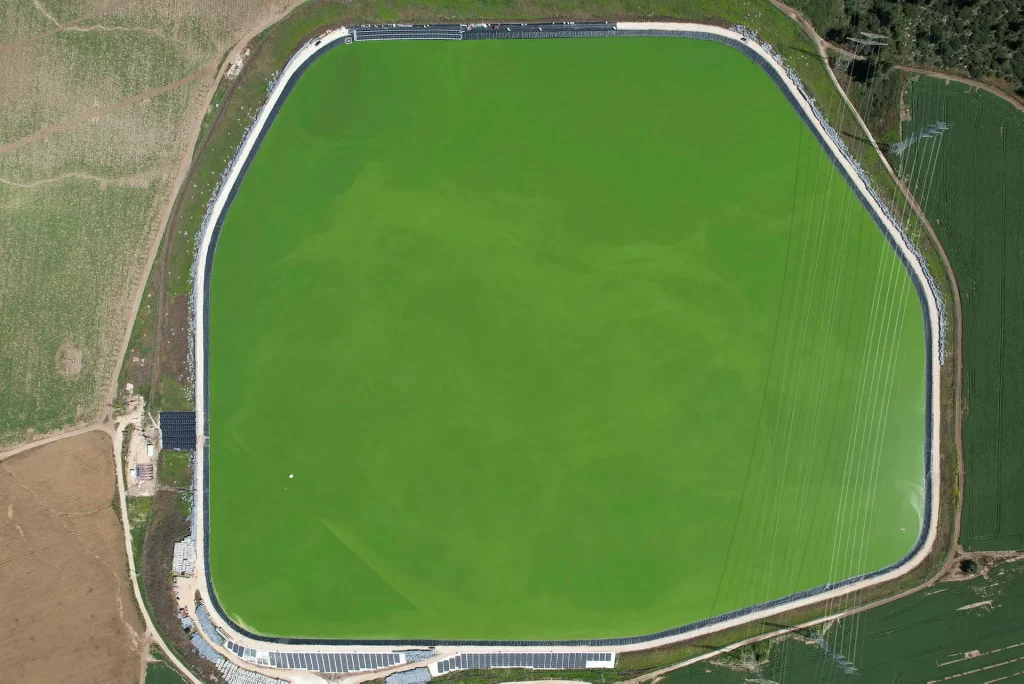Ruth Schuster. Jul 16, 2024
Primordial creatures that may have been the first life on Earth may also be its last, at the rate we’re going. Blue-green algae are a key part of the natural ecosystem but they particularly flourish in waters polluted by fertilizer and sewage, especially but not only warming waters. “Pond scum” is suffocating lakes, sliming coastlines and creating vast dead zones in the seas.
Unnaturally vast blooms block sunlight from the waters below, starving other algae which can’t photosynthesize in the murky dark. The water turns anoxic, suffocating other aquatic life. The blue-green algae’s emanations poison the water and contaminate the air we breathe. The natural ecological balance is being disrupted so badly that the oceans are turning green.
But could overcoming these unicellular juggernauts also hold a key to saving the planet? BlueGreen Water Technologies says its ‘Lake Guard’ technology not only kills algal blooms, it removes carbon from the atmosphere while doing so.
There is a lot of talk about “carbon capture” (not to mention “water treatment”). This company designed a pragmatic way to both kill the blooms which hadn’t been effectively achieved before, while removing carbon.
Having killed the biggest animals and contaminated the planet, we may find succor in killing the smallest. But this Israeli-American company founded in 2014 could turn a scourge into a savior. Isn’t it odd where humanity can find hope?


Exploration to the tipping points
Why does carbon need removing from the atmosphere? Because the climate reacts to carbon dioxide and methane buildup at a lag. It has yet to fully react to greenhouse gases already pumped into the atmosphere and meanwhile for all the prattle, we continue to belch them into the air like there’s no tomorrow. They have already reached unprecedented concentrations, leading us into uncharted climatic territory.
Scientists warned that at 1.5 degrees average warming “in the future,” the climate will be “out of control.” We are already there. Nor are we on trajectory for “net zero,” where human activity produces no new emissions in net terms. Electric cars are not the savior.
We have thoroughly explored the planet’s surface; now we seem determined to explore unknown tipping points.
“The world today is fixated on net zero but it’s a shitty target,” BlueGreen CEO Eyal Harel shares (a few times). “It’s like a doctor coming to a person with lung cancer and saying, let’s aim for metastasis to reach your liver and kidneys too, but not the brain. That’s net zero. It means things will continue to get worse. The real target should be net negative, by handling the legacy emissions. We need to remove more carbon than we emit.”
So far the company has devoted its attentions to small water water bodies, the biggest being a 13-square-kilometer (5 square miles) lake in China. It’s gearing up to treat an 18-km2 lake in Florida. That is a drop in the befouled sea. Can BlueGreen’s technology be scaled up to tackle the Great Lakes or oceans, which get afflicted by blooms so vast they can be seen from outer space?
“The current answer is, I believe, yes,” Harel answers. In his mind’s eye from day one, Lake Erie looms greenly.
The Daphnia precedent
With scaling up in minds, their solution focused on simplicity. It consists of a novel formulation of floating time-releasing hydrogen peroxide, a naturally occurring molecule that breaks down into water and oxygen. The company applies it applied “surgically” to the bloom-infected area.
Which means, one doesn’t just toss barrels of it into the water anywhere and rabbit off. Based on a growing body of data and experience, they carefully choose where and how much of the substance to apply, Harel explains. Dosage is minimized because their solution causes a biological chain reaction. Death among the blue-green algae, also called cyanobacteria begins at the point of application and ripples outwards.
“Within hours to days they undergo collective suicide,” he enthuses. Well, they die, anyway. Their breakdown may form a grayish foam on the water surface that passes within days as their remains gradually sink to the bottom. Sediment will build up on top of the tiny cadavers and they and their carbon will remain down there forever more (turning, after millions of years, into oil or natural gas!) or until the lake dries up and its mud blows away. It is true that some of their carbon will escape through natural decomposition and return to the carbon cycle – it depends on the individual features of the water body. But the more cyanobacteria die and sink, the more carbon is trapped.
Thus killing cyanobacteria befouling our waters could sink carbon and help save the planet. Amazing. “When we treat the water we are literally taking part of the genie and putting back in the bottle,” Harel sums up.


Dumping enough hydrogen peroxide into contaminated water to kill massive amounts of microscopic beings inevitably has side effects. “The baseline for our intervention is that the lake is very sick. Of course we create an excess amount of oxidative stress but it’s sub-lethal,” he says.
Take Daphnia, cousins of crabs that are commonly called water fleas. The company tested and found that they survive the treatment. But if left in untreated contaminated water, they die. Also, the effect is confined to the lake’s upper layers.
In short don’t use it if you don’t need it, but Harel points out: the question isn’t just what the treatment does, it’s what the alternative is. A dead aquatic zone.
Rich nations like the U.S. and China can afford cleanups. What about the poor countries? Will this be a rich man’s cure? Also, if carbon capture by bluegreen assassination is to save us, the scale needs to be gargantuan. Assuming the technology can be scaled up, who will pay for the planetary cleanup?


I dream a dream of Boeing
One reason why no solution has been found for oceanic blooms is that water is a fast-changing, chaotic biological environment. Key to the company’s vision is the surgical application, which relies on data analytics: pinpointing where to apply how much of the cure to get the optimal result. This is a work in constant process.
“We have all sorts of tricks,” he says: satellite data, big data, AI – and drones, which can achieve far finer resolution of conditions in the water than satellites. Manufacturing enough to treat ocean-scale blooms won’t be a constraint, he believes. The bottleneck to scaling up at this point is the analytics on contamination in chaotic bodies of water, but the data is accruing.
Regarding distribution, right now they use boats or choppers, but to treat an ocean one day? “My fantasy is to collaborate with Boeing, repurpose their B-52s into supertankers coordinated by computers for long-distance, large-scale remediation purposes,” Harel says. The company has yet to test the solution in the sea but on paper it works, Harel says. It is collaborating with the Mote Marine Laboratory institute in Florida, which is working on red tides, another form of algal bloom. “Our preliminary studies indicate really good results,” he adds.
To impact globally, the company has to make the solution affordable. It’s gone one better. BlueGreen is developing a model where poor countries get their lakes cleaned for free. The company provides the material andgets credits on the carbon captured in the process, Harel says. Crucially, the company can quantify the process’ carbon burial efficiency, thanks to the London registry Social Carbon, and can sell the credits down the line to the likes of Google.
Just as crucially, governments can make money on the process by charging “development” fees, incentivizing them to take action. Under Article 6 of the Paris Treaty, ‘Global South’ nations can sell locally-produced carbon credits to the ‘Global North’ at a premium.
Here, the ‘Global South’ get the opportunity to tackle a deadly problem in their water and make money in the process, Harel explains.
“From the impact side, it’s a game changer,” Harel says. “I want to clean up water all over the world. The potential for carbon removal in freshwater alone is 3-15 billion tons a year. That’s the target. In the oceans its 50-100 gigatons,” he says.
Scratching world emissions
Meanwhile in Utah, the company treated the Mantua reservoir, about two square kilometers (.7 square miles) in area, that was badly contaminated. Seeding the reservoir with the cure took a couple of hours, the lake was rehabilitated within days and net 12,913 tons of CO2 were removed. Didn’t even scratch world emissions, but it shows the potential.

“With our modest means today, within 12 months I can remove 250,000 tons of carbon which is double the global capacity for high quality carbon credits, which was 130,000 tons last year,” Harel points out. “The reason why we can achieve so much is that microalgae is the most efficient organism in world in taking up carbon and we are piggybacking on natural processes. We are doing carbon removal in the way nature designed it.”
What about “climate engineering” / geoengineering, a fave futuristic “option” among certain rah-rah tech circles? “The numbers don’t add up,” he says. Serious minds and bodies such as the UN are concerned about monkeying with the planetin ways we don’t understand.
So what have we? The company enters, treats the water, the population of toxic cyanobacteria collapses and then the usual species slip back, reinstating the biodiversity that is Mother Nature’s immune system.
To have global impact, the company will have to share the technology. No? “Yes. We have to,” Harel answers. The plan is to spread through franchising. “We are in the process of, let’s call it dumbing it down, so that anybody can pick it up,” he adds – and all can make money while doing it because philanthropy only goes so far.
And as the native species re-establish themselves in the treated water, they become the buffer against the resurgence of the toxic bloom, Harel says.
Then, if that fails, which it well may as humans continue to inject fertilizer and sundry foulness into the water, the company or a local franchisee can treat the water again. And lest you worry about cyanobacteria rights, the company isn’t going to drive them to extinction. They were here before us, and will be here after we are gone.
